An Early and Artful Edition
Hello, friends! If you’re thinking Wait, didn’t I just get a newsletter from this guy? — yeah, you did, just a few days ago. But today I’m embarking on a new semester of teaching and things will be crazy and for a little while I might forget to make a newsletter. So here’s one to tide you over until I settle back into sanity. It’s about art.
The late great Tom Wolfe was always funny but he wasn’t always fair. Consider this passage from The Painted Word:
Albers taught the famous Bauhaus Vorkurs, or introductory course. Albers would walk into the room and deposit a pile of newspapers on the table and tell the students he would return in one hour. They were to turn the pieces of newspaper into works of art in the interim. When he returned, he would find Gothic castles made of newspaper, yachts made of newspaper, airplanes, busts, birds, train terminals, amazing things. But there would always be some student, a photographer or a glassblower, who would simply have taken a piece of newspaper and folded it once and propped it up like a tent and let it go at that. Albers would pick up the cathedral and the airplane and say: “These were meant to be made of stone or metal — not newspaper.” Then he would pick up the photographer’s absentminded tent and say: “But this! — this makes use of the soul of paper. Paper can fold without breaking. Paper has tensile strength, and a vast area can be supported by these two fine edges. This! — is a work of art in paper.” And every cortex in the room would spin out. So simple! So beautiful … It was as if light had been let into one’s dim brain for the first time. My God! — starting from zero!
Okay — but here’s what Albers actually loved to see his students do with folded paper:
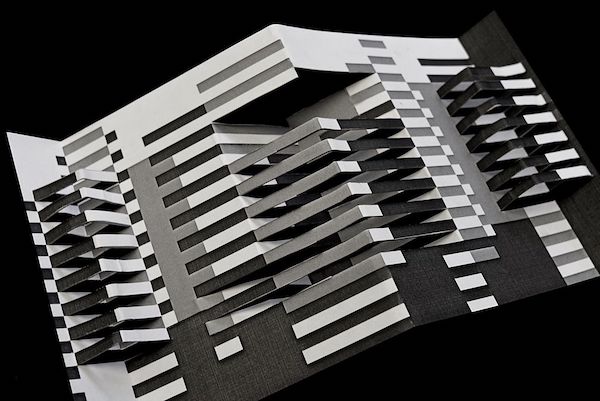
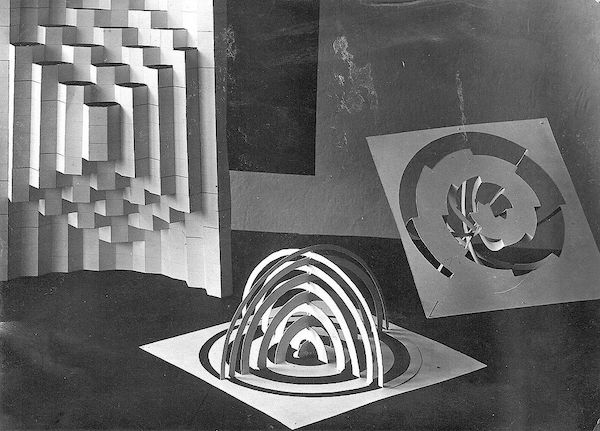
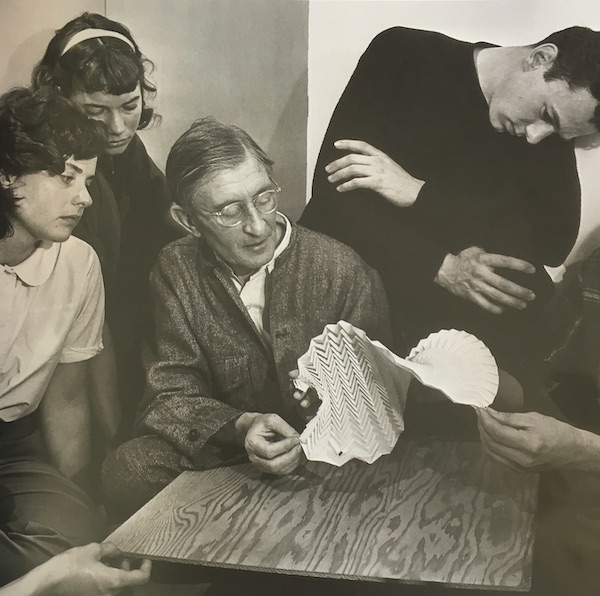
Josel Albers’s wife Anni Albers was an artist in textiles. Here’s her piece Six Prayers:
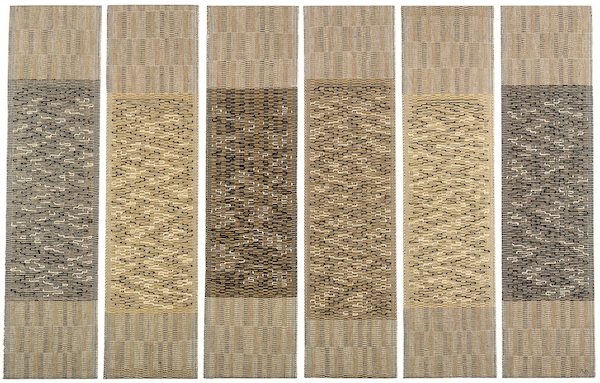
Click here for a larger image of the work, and here to read a lovely tribute to Anni Albers by the art historian Brian T. Allen. Allen saw a show of Anni Albers’s work at the Tate Modern in London — it’ll be there for just a few days more as I write.
And while we’re on the subject of textiles, the artist Irene Posch has embroidered a computer.
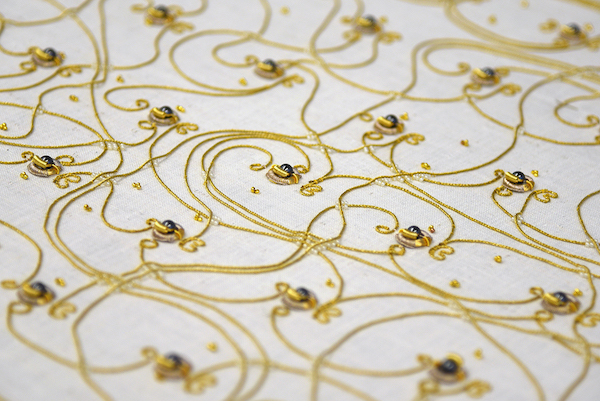
- “Art is not Magic, i.e., a means by which the artist communicates or arouses his feelings in others, but a mirror in which they may become conscious of what their own feelings really are: its proper effect, in fact, is disenchanting.” — W. H. Auden
- “Revising by the method described is a form of increasing the ambient intelligence of a piece of writing. This, in turn, communicates a sense of respect for your reader. As text is revised, it becomes more specific and embodied in the particular. It becomes more sane. It becomes less hyperbolic, sentimental, and misleading. It loses its ability to create a propagandistic fog. Falsehoods get squeezed out of it, lazy assertions stand up, naked and blushing, and rush out of the room.” — George Saunders
- My book The Year of Our Lord 1943 is a story rather than an argument, and here I try to explain some of the implications I see in that narrative.
- There’s been some talk on social media about The Last Song: the music people want to hear when they’re dying. For me there can only be one.